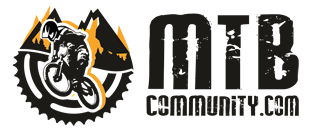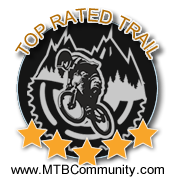How to Ride Rocky Trails
But once you tackle your fear of riding rocky trails you may actually begin to enjoy them and start seeking them out! Rocky terrain can be some of the most challenging and fun type of riding you can do because it tests your balance, skill and guts. I'm sure you have seen those YouTube videos of the riders flying down rocky hillsides like they didn't even know the rocks were there.
One key to success when it comes to rocky trails is to have the right kind of bike. Sure you can pull it off on a hardtail and many do but it may give you a really rough ride while doing so. Front suspension is more critical than rear suspension when it comes to rocks since you can really get jarred and have your hands go numb if you are going fast enough for long enough on these types of trails. If you are going to go all out over big rocks at high rates of speed then you may want to go with a coil fork that offers 7+ inches of travel to help smooth it out. But for most of us you can get away with a nice adjustable 5+ inches of travel with an air fork and be just fine. Geometry also comes into play when going over bigger rocks or steeper trails. You don't want to feel like you are leaning too far over the handlebars when going over a big rock or actually go over the handlebars while doing so. Most XC bikes can handle rocky trails just fine but keep the geometry in mind if you are planning ride more technical trials with larger rocks.
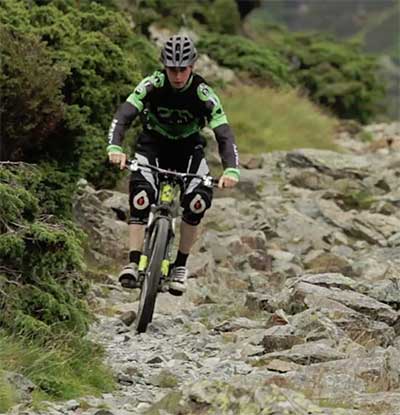
Riding style also comes into play on rocky trails as does the way you actually ride them. When going over larger rocks or down rocky hills you want to make sure you are leaning back to avoid going over the bars and to keep yourself balanced. It's also a good idea to keep your seat down so when you are leaning back you don't get caught up on it. Another thing that helps is to keep your speed up over the rocks. This may not seem like a good idea while you are about to ride over some but it helps you to keep your balance and actually smooths out the ride. Just keep in mind that this only applies to rocks that are so big in size and most likely won't help you over large boulders. Once you get comfortable you can start jumping off and over the rocks when you get to them to add some excitement to the ride.
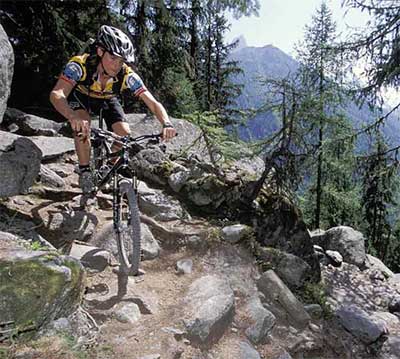
Tire pressure is also another important factor for these types of trails. You are more prone to getting flats on rocky trails than on smoother ones. There is some debate about running lower or higher pressure over rocks but we tend to say stick on the high side. Running higher pressure will help prevent pinch flats which is when the tire gets pinched on a rock and punctures the tube. Running higher pressure will make the ride more bouncy and give you less traction but it may be better than changing your tube 5 times on a ride. By higher pressure we are referring to the mid to upper 30s when it comes to psi. You may want to play with some different pressures to see what works the best for you.
Finally you should make sure that you are wearing the proper protection for these more difficult types of trails. When you take a fall on rocks it hurts more than it does on a nice smooth trail. Your protection options include a full face helmet if you are going more hardcore, elbow pads and knee pads. You can get flexible elbow and knee pads that are more comfortable and can be worn for longer periods of time without getting in the way compared to pads that have plastic inserts\cups inside them.
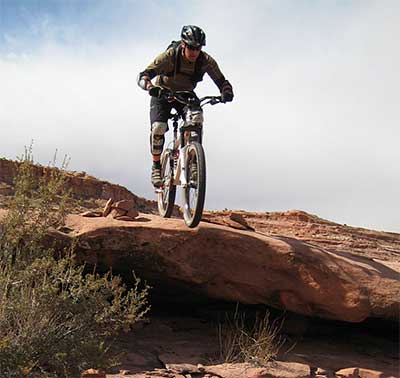
To summarize here are some things to consider when riding rocky trails:
- Practice, practice, practice!
- Having the right type of bike
- Having the right type of suspension
- Adjusting your riding style to this type of terrain
- Having the right tire pressure
- Using the appropriate type of protection
Posted by Jim Bernstein
